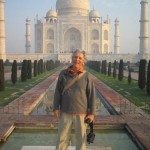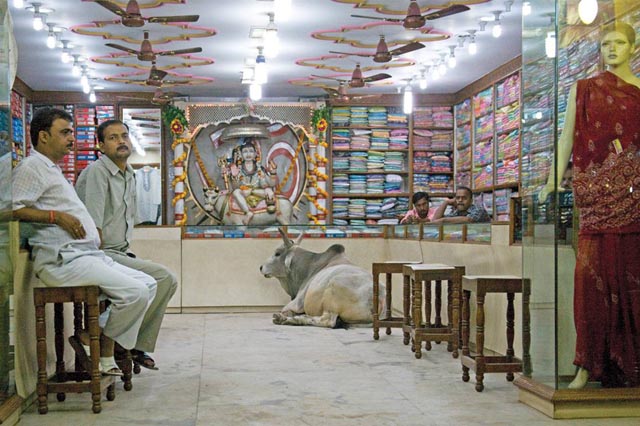
India Exposed: The Subcontinent from A-Z
How many Indias are there?
As many as the eyes that perceive it.
[dropcap]E[/dropcap]ach visitor sees a different India, bringing in their own experiences to the encounter. British photographer Clive Limpkin has a lively new book ‘India Exposed: the Sub-Continent A-Z’ (Abbeville Press) which shows the results of his brush with India. He and his wife Alex traveled to India for a wedding and ended up getting completely hooked.
Limpkin, who earlier won the Robert Capa Gold Medal from Life magazine for his images of fighting in Northern Ireland, now turns his lens on the vast sub-continent of India, traveling extensively, photographing not only what tourists see but some very intimate offbeat images too.
For the award-winning photojournalist who had worked on Fleet Street, it was a first encounter with India. “My American publisher set the task of comprehensively covering the sub-continent in six months within the format of over 100 subjects, each with photographs and mini-essays,” he recalls.
“So we sought the knowledge of a UK specialist in Indian travel who plotted our routes brilliantly and attended to every detail, leaving us to concentrate on the work in hand.”
Limpkin worked with two digital Canon EOS 1DS Mk. 11 cameras and a variety of Canon lenses.
“Such are the photographic possibilities per hour in India, greater than anywhere else in the world I’ve visited. Speed was essential and the 80,000 images I ended up with would not have been possible without the advances in image stabilization, auto focus and high ISO speeds.”
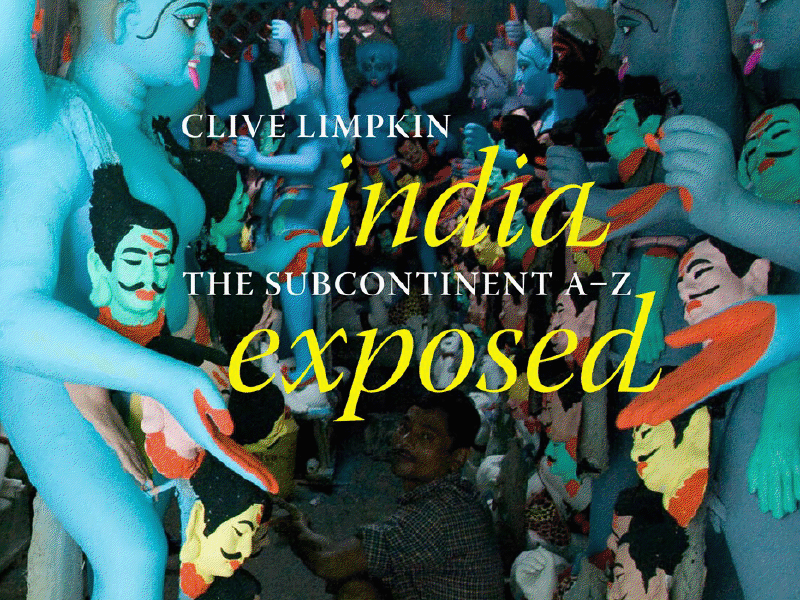
80,000 images are equal to myriads of words and in Limpkin’s book, you see a lot of Indias reflected. Look past the beggars and the clutter and the snake charmers, you see many whimsical and touching images of the real India: a cool camel in Rajasthan, with artistic tattoos over its body – yes, ornamentation is such a part of the culture that even animals are decorated like brides.
A child runs through a vast field of drying red chili peppers, conveying the unsung visual beauty that lurks in every corner of the country; a cow sitting placidly inside a garment store in Varanasi, as nonchalantly as a shopper, surrounded by fabrics. This live and let live policy often found amongst humans and animals is one of the endearing qualities of India.
“Though Rajasthan provided the more dramatic photography, I found Gujarat the most rewarding, being freer of tourism and offering a more realistic picture of a sub-continent so dependent on agriculture,” says Limpkin.
He also has the photo journalist’s affinity for striking subjects, and what can be more striking than the contrasts of poverty and affluence?
“City poverty proved visually arresting, being juxtaposed with comparative wealth, and rural poverty less so,” he says. “ I was braced for it to an extent, but it still affronts western eyes that so little is being done to alleviate the gulf between the haves and the have nots.”
Clive Limpkin’s India Exposed
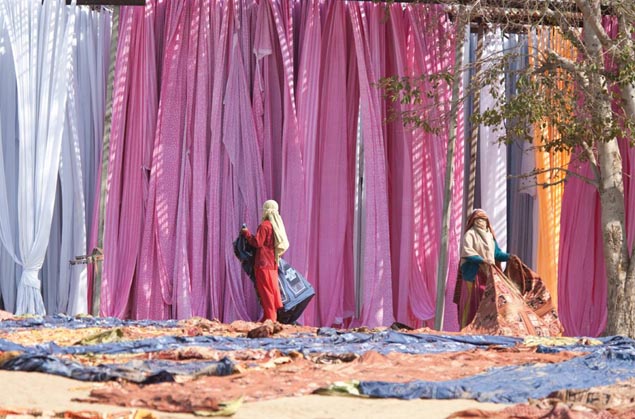
Limpkin’s Passage to India
Limpkin is returning to India in early 2010 to shoot images once again. That usually is the case with India – one encounter is never enough!
“I’ve always had a glass-half-full view on life, probably from my Indian genes, but without doubt my six months altered my approach to material wealth and ambition, showing me how much we westerners can learn from Indians’ more spiritual approach to life,” says Limpkin.
My ears pricked up. Indian genes – how so?
“Ten years ago, when the 1910 UK Census went online, I discovered that my father and grandfather has been born in Allahabad – no great surprise in itself as we had always known my father had been in the Army in India, only returning to the UK when World War One broke out,” he says.
“But during our shoots in India, I occasionally pointed out to my wife Alex that passing Indian men were the double of my father, even down to his swarthy complexion which after a good English summer I would describe as ‘ash matt.’
He adds, “Slowly – and I mean slowly – I put two and two together; it was not uncommon for English troops based in India to take Indian mistresses and I now have little doubt that I have Indian blood which I hope to prove conclusively, researching the family line during subsequent visits.”
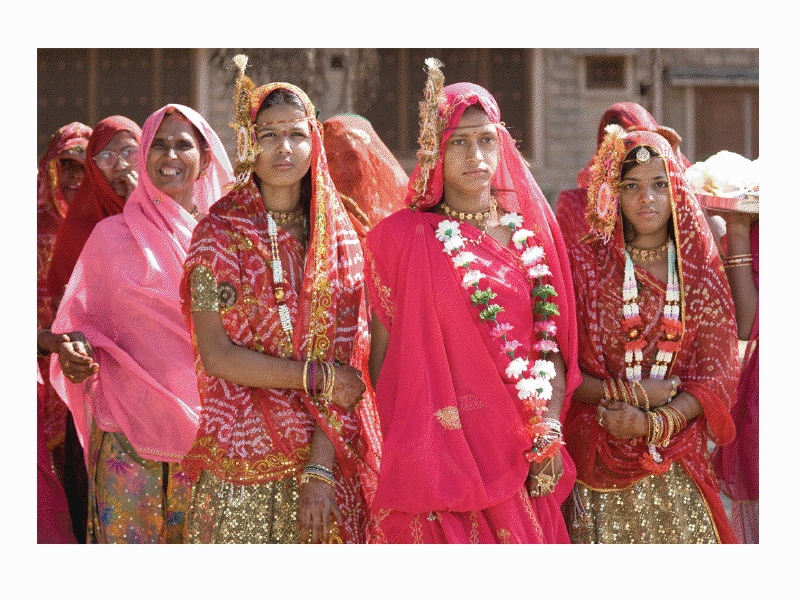
India: Food Feasts
Asked about his encounters with Indian food, he says that since the ‘typical’ dishes being offered to western visitors bore little relation to the staple diet of the locals, he took every opportunity to enjoy the latter. In rural areas they tended to choose up-market tented camps that offered power and communication facilities – hardly roughing it, but ‘safe’ food was vital, he says, as they could not afford to be ill for a single day.
“Due to the pace of our trips, we had little time to sample local cuisine, often having to snack in our hotel room as we downloaded the day’s images. One of the few chances came in Tanjore, Tamil Nadu, when we offered to take our guide and driver out to dinner at the restaurant of their choice and to hell with the cost.
It proved to be a mud-floored hall where large banana leaves were placed before us and spread with pyramids of rice and angle hair pasta, encircled with a dozen home-made dipping sauces, bowls of dhal and dosa pancakes, followed by sweet milk for dessert. Afterwards, the waiter politely asked why we hadn’t finished it all as he presented a bill of $3 for all four.”
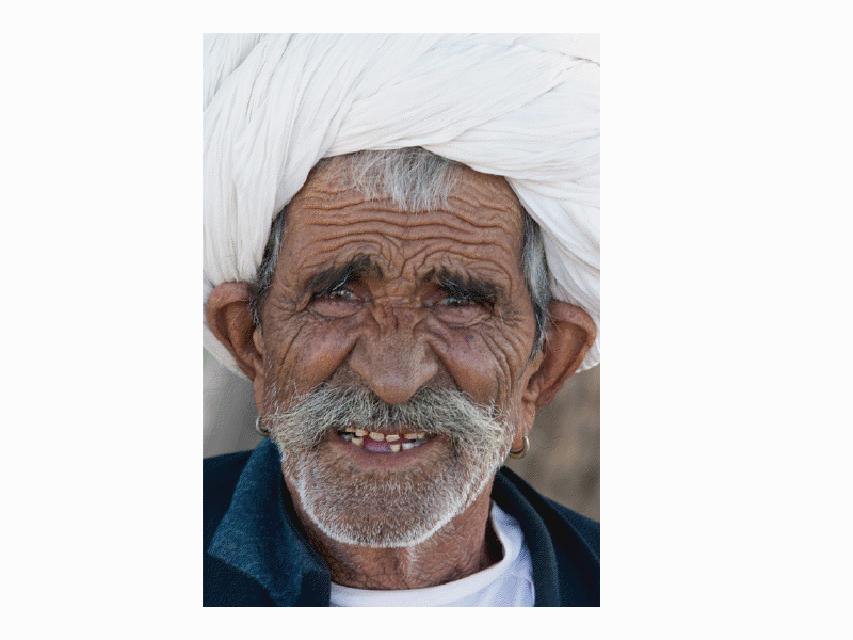
India: The People
Limpkin offers his own take on India in a number of essays covering everything from cremation to onions to bicycles, from monsoons to Mumbai to cricket. His camera, however, returns time and again to what really moves him: the human connection. As he writes: “When friends ask for one good reason to visit, I offer them a billion – it’s the people.”
He describes the sweetness of the people: “We never met a single ugly moment of dissension whilst photographing, so often being invited to the subjects’ homes to meet their families or share their meals. Embarrassed in photographing a Rajasthan lorry driver whose overload of chaff had burst and covered the road, I mumbled a thank you. He shook his head and said, ‘No, thank you,’ honored to have been photographed. Anywhere but India, I might have expected a smack in the mouth!”
Clive Limpkin recalls the disarming smiles and warm greetings and notes, “These salutations come not from those seeking your tourist dollar but from millions upon millions with nothing to their name that act like they’ve just won life’s lottery and want you to share it.”
© Lavina Melwani (First posted in 2009)
All Photos by Clive Limpkin
Related Article: India on My Mind
